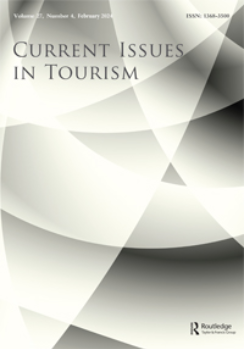Open innovation in tourism micro-firms: evidence from the Italian Alps
IF 4.6
3区 管理学
Q1 HOSPITALITY, LEISURE, SPORT & TOURISM
引用次数: 0
Abstract
ABSTRACTThis study examines the relationship between openness to external collaborations and innovation outcomes in tourism micro-firms, considering the variety of partners, the geographical outreach of the relationships, and the number of implemented innovation types. A quantitative analysis of tourism micro-firms located in the Italian Alps is complemented with rich qualitative evidence gathered through follow-up interviews. Our findings show that higher openness to external collaborations leads to a higher probability of introducing an innovation and to higher innovation performances. However, above a certain threshold, the returns from open innovation decrease as a firm’s openness increases. This assumption does not hold when considering openness to national and international partners, which is positively and significantly related to innovation performance. The results suggest that the purposive management of external collaborations is a central issue for tourism entrepreneurs and highlight the positive role that intermediaries can play in facilitating such dynamics.KEYWORDS: Tourism micro-firmsopen innovationopennesstourism innovationrural tourism AcknowledgmentsValentina Biconne thanks CNA Torino (the Italian Confederation of Craft Trades and Small- and Medium-Sized Enterprises) and Regione Piemonte (Piedmont Regional Government) for funding the Ph.D. programme in apprenticeship (Apprendistato di Alta Formazione e di Ricerca 2016-2018 di cui alla Determinazione n. 537 del 03/08/2016 e successivo aggiornamento approvato con D.D. n. 1486 del 17/12/2018). The authors also thank Interreg Alcotra Italy-France European cross-border programme 2014–2020 for funding the survey activity.Disclosure statementNo potential conflict of interest was reported by the author(s).Notes1 Micro-firms are defined as enterprises with fewer than ten employees and an annual turnover of two million euros at most (European Commission, Citation2015).Additional informationFundingThis work was supported by Interreg Alcotra Italy-France European cross-border program 2014–2020: [Grant Number 5031].旅游微型企业的开放式创新:来自意大利阿尔卑斯山的证据
摘要本研究考察了旅游微型企业对外合作的开放性与创新成果之间的关系,考虑了合作伙伴的多样性、合作关系的地理外延以及实施创新类型的数量。对位于意大利阿尔卑斯山的旅游微型公司进行定量分析,并通过后续访谈收集了丰富的定性证据。我们的研究结果表明,对外部合作的开放程度越高,引入创新的可能性越大,创新绩效也越高。然而,在一定阈值以上,开放式创新的收益随着企业开放度的增加而降低。当考虑到对国内和国际合作伙伴的开放程度时,这一假设就不成立了,因为开放程度与创新绩效呈正相关。研究结果表明,有目的的外部合作管理是旅游企业家的一个核心问题,并强调了中介机构在促进这种动态方面可以发挥的积极作用。致谢valentina Biconne感谢CNA Torino(意大利工艺贸易和中小企业联合会)和Piemonte地区(皮埃蒙特地区政府)为学徒博士项目提供资金(2016年3月8日第537号di cui alla Determinazione, 2016年12月17日第1486号)。作者还感谢Interreg Alcotra意大利-法国欧洲跨境项目2014-2020为调查活动提供资金。披露声明作者未报告潜在的利益冲突。注1微型企业被定义为员工少于10人,年营业额不超过200万欧元的企业(European Commission, Citation2015)。本研究由Interreg Alcotra意大利-法国欧洲跨境项目2014-2020支持:[批准号5031]。
本文章由计算机程序翻译,如有差异,请以英文原文为准。
求助全文
约1分钟内获得全文
求助全文
来源期刊

Current Issues in Tourism
HOSPITALITY, LEISURE, SPORT & TOURISM-
CiteScore
15.50
自引率
10.00%
发文量
230
期刊介绍:
Journal metrics are valuable for readers and authors in selecting a publication venue. However, it's crucial to understand that relying on any single metric provides only a partial perspective on a journal's quality and impact. Recognizing the limitations of each metric is essential, and they should never be considered in isolation. Instead, metrics should complement qualitative reviews, serving as a supportive tool rather than a replacement. This approach ensures a more comprehensive evaluation of a journal's overall quality and significance, as exemplified in Current Issues in Tourism.
 求助内容:
求助内容: 应助结果提醒方式:
应助结果提醒方式:


